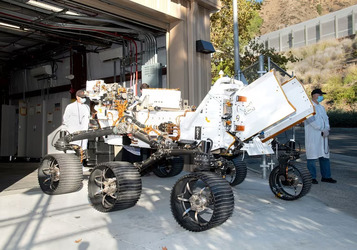The week's pick
Random Articles
Reseach Article
A Vision based Vehicle Detection System
| Communications on Applied Electronics |
| Foundation of Computer Science (FCS), NY, USA |
| Volume 2 - Number 6 |
| Year of Publication: 2015 |
| Authors: Himanshu Chandel, Sonia Vatta |
 10.5120/cae2015651767
10.5120/cae2015651767
|
Himanshu Chandel, Sonia Vatta . A Vision based Vehicle Detection System. Communications on Applied Electronics. 2, 6 ( August 2015), 6-16. DOI=10.5120/cae2015651767
Abstract
In recent years, automotive manufacturers have equipped their vehicles with innovative Advanced Driver Assistance Systems (ADAS) to ease driving and avoid dangerous situations, such as unintended lane departures or collisions with other road users, like vehicles and pedestrians. To this end, ADAS at the cutting edge are equipped with cameras to sense the vehicle surrounding. This research work investigates the techniques for monocular vision based vehicle detection. A system that can robustly detect and track vehicles in images. The system consists of three major modules: shape analysis based on Histogram of oriented gradient (HOG) is used as the main feature descriptor, a machine learning part based on support vector machine (SVM) for vehicle verification, lastly a technique is applied for texture analysis by applying the concept of gray level co-occurrence matrix (GLCM). More specifically, we are interested in detection of cars from different camera viewpoints, diverse lightning conditions majorly images in sunlight, night, rain, normal day light, low light and further handling the occlusion. The images has been pre-processed at the first step to get the optimum results in all the conditions. Experiments have been conducted on large numbers of car images with different angles. For car images the classifier contains 4 classes of images with the combination of positive and negative images, the test and train segments. Due to length of long feature vector we have deduced it using different cell sizes for more accuracy and efficiency. Results will be presented and future work will be discussed.
References
- Adnan Shaout, Dominic Colella, S. Awad, “Advanced Driver Assistance Systems
- Past, Present and Future,” Seventh International Computer Engineering Conference (ICENCO), 2011, pp. 321–329.
- Andreas Geiger, Philip Lenz and Raquel Urtasun, “Are we ready for Autonomous Driving? The KITTI Vision Benchmark Suite,” IEEE Conference on Computer Vision and Pattern Recognition (CVPR), 2012, pp. 3354 - 3361.
- Advance driver assistance systems http://www.freescale.com/webapp/sps/site/overview.jsp?code=ADAS
- LG - Safety & Convenience Devices, Advance driver assistance systems
- http://www.lgvccompany.com/en/products/adas-camera-systemVision based advance driver assistance
- Whei Zhang,Q.M Jonathan Wu,Xiaokang Yang, “Multilevel framework to detect and handle Occlusion,” IEEE Transaction on Intelligent Transport Systems,VOL.9,NO.1,2008
- Himanshu Chandel and Sonia Vatta, “Occlusion Detection and Handling: A Review,” International Journal of Computer Applications (0975 – 8887) Volume 120 – No.10, June 2015.
- SLAM for dummies http://ocw.mit.edu/courses/aeronautics-and-astronautics/16-412j-cognitive-robotics-spring-2005/projects/1aslam_blas_repo.pdf.
- Herbert Bay, Tinne Tuytelaars, Luc Van Gool ,“SURF: Speeded Up robust features ,”15th International Conference on Pattern Recognition,” 9th European Conference on Computer Vision, Graz, Austria, May 7-13, 2006. Proceedings, Part I , pp. 404-417
- P. Felzenszwalb, D. McAllester, D. Ramanan,“ A discriminatively trained, multiscale, deformable part model,” IEEE Conference on Computer Vision and Pattern Recognition, 2008. CVPR 2008. pp. 1 – 8.
- Navneet Dalal and Bill Triggs, “Histograms of Oriented Gradients for Human Detection,” IEEE Computer Society Conference on Computer Vision and Pattern Recognition, 2005, pp. 886 - 893 vol. 1.
- Ro´merRosales and StanSclaroff, “Improved Tracking of Multiple Humans with Trajectory Prediction and Occlusion Modeling,” IEEE Conf. on Computer Vision and Pattern Recognition,1998
- Davi Geiger,Bruce,Ladendorf,Alan Yuille, “Occlusions and Binocular Stereo,”International Journal of Computer Vision,1995
- Nello Cristianini and John Shawe-Taylor, “An Introduction to Support Vector Machines and Other Kernel-based Learning Methods”, Cambridge University Press, 2000.
- James J. Little and Walter E. Gillet, “Direct Evidence for Occlusion in Stereo and Motion,” Computer Vision — ECCV, 1990
- Sing Bing Kang, Szeliski R. , Jinxiang Chai, “Handling occlusions in dense multi-view stereo,” Proceedings of the 2001 IEEE Computer Society Conference on Computer Vision and Pattern Recognition, 2001, pp. I-103 - I-110 vol.1.
Index Terms
Keywords

